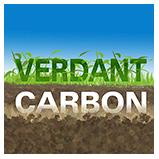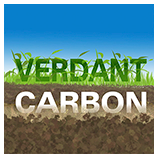|
The soil microbial community (SMC) is an important factor in determining how much carbon is stored in the soil through soil carbon sequestration (the process in which CO2 is removed from the atmosphere and stored in the soil carbon pool) [1]. Soil microbial communities, also, play several important ecological and physiological functions such as soil organic matter decomposition, regulation of mineral nutrient availability and formation of mycorrhiza to stimulate plant growth [2]. Therefore, in general, the greater the soil microbial biomass, the greater the fertility of the landscape.
Fungi and bacteria are the two dominant groups of soil microbial communities worldwide. These organisms directly regulate the cycling of carbon between the soil and the atmosphere [3]. Fungi and bacteria differ in their responses to changes in agricultural management practices; with fungi usually being more sensitive to these changes. A change in SMC structure or reduction in SMC biomass and therefore nutrients available in the soil, has the potential to reduce the fertility and productivity of it. The fungal population will generally increase at a greater rate than that of bacteria, leading to a higher fungal-to-bacterial ratio in the soil. However, the use of fungicides can negatively affect the beneficial activities of the non-targeted organisms in the soil and change the composition of the SMC, altering the structure and function of soil microbial communities [4]. The fungal-to-bacterial ratio is therefore a good indicator of environmental changes in the soil and can have a significant impact on the structure and activity of the community [1]. The gradient effects of carbon and nitrogen in the soil can also cause significant effects upon the microbial community structure [5]. Previous studies have shown that soil depth is a fundamental environmental factor shaping the soil microbiome. The higher the soil compaction in the deeper layers reduces oxygen availability, therefore limiting the growth of many microbial taxa [6]. Differences in the distribution and location of the soil microbial community can affect the turnover of soil carbon through its interaction with vegetation and various soil properties. Spatial variability arises because bacterial communities exist in distinct and different microenvironments within the architecture of the soil which directly affects their activity and therefore their ability to sequester carbon into the soil [7]. Citations: [1] Bhattacharyya, S.S. et al. (2022) ‘Soil carbon sequestration – an interplay between soil microbial community and Soil Organic Matter Dynamics’, Science of The Total Environment, 815, p. 152928. doi:10.1016/j.scitotenv.2022.152928. [2] Sofo, A. et al. (2014) ‘Sustainable soil management in Olive Orchards’, Emerging Technologies and Management of Crop Stress Tolerance, pp. 471–483. doi:10.1016/b978-0-12-800875-1.00020-x. [3] Yu, K. et al. (2022) ‘The biogeography of relative abundance of soil fungi versus bacteria in surface topsoil’, Earth System Science Data, 14(9), pp. 4339–4350. doi:10.5194/essd-14-4339-2022. [4] Wainwright, M. (1977) ‘Effects of fungicides on the microbiology and biochemistry of soils — a review’, Zeitschrift für Pflanzenernährung und Bodenkunde, 140(5), pp. 587–603. doi:10.1002/jpln.19771400512. [5] Liu, M. et al. (2019) ‘Microbial community structure and the relationship with soil carbon and nitrogen in an original Korean pine forest of Changbai Mountain, China’, BMC Microbiology, 19(1). doi:10.1186/s12866-019-1584-6. [6] Hao, J. et al. (2021) ‘The effects of soil depth on the structure of microbial communities in agricultural soils in Iowa (United States)’, Applied and Environmental Microbiology, 87(4). doi:10.1128/aem.02673-20. [7] Nunan, N. et al. (2003) ‘Spatial distribution of bacterial communities and their relationships with the micro-architecture of Soil’, FEMS Microbiology Ecology, 44(2), pp. 203–215. doi:10.1016/s0168-6496(03)00027-8.
0 Comments
|
AuthorFrank Gollins. To help provide an understanding of the science behind soil, we have written some essays, addressing some FAQs, and how/why we do what we do.
ArchivesCategories |
|
Vertical Divider
|
Verdant Carbon Limited
Greenfields, Pested Lane, Challock, Ashford Kent TN25 4BD Telephone : 07732 476 447 Registered in England and Wales, Company number: 13610537 VAT number: GB393249470 Registered office: Vine Hall Farm, Bethersden, Ashford, England, TN26 3JY |
Verdant Carbon Limited
Greenfields, Pested Lane, Challock, Ashford Kent TN25 4BD
Telephone : 07732 476 447
Registered in England and Wales, Company number: 13610537 VAT number: GB393249470
Registered office: Vine Hall Farm, Bethersden, Ashford, England, TN26 3JY
© Content Copyright to Verdant Carbon 2021
Telephone : 07732 476 447
Registered in England and Wales, Company number: 13610537 VAT number: GB393249470
Registered office: Vine Hall Farm, Bethersden, Ashford, England, TN26 3JY
© Content Copyright to Verdant Carbon 2021
Website by Greg Bottle

 RSS Feed
RSS Feed

